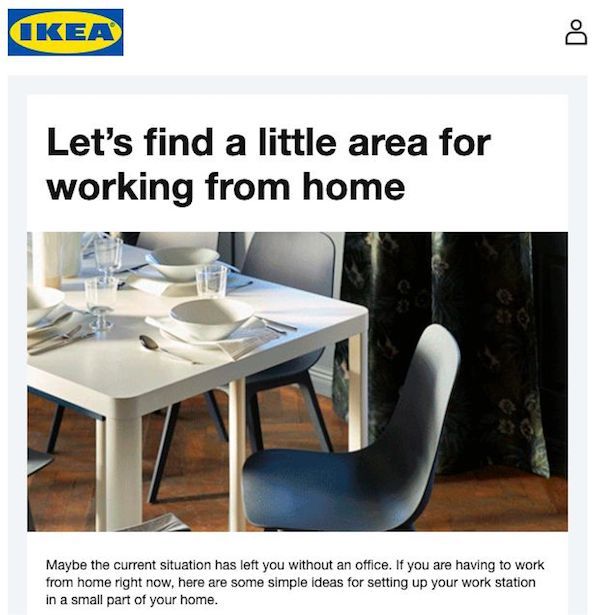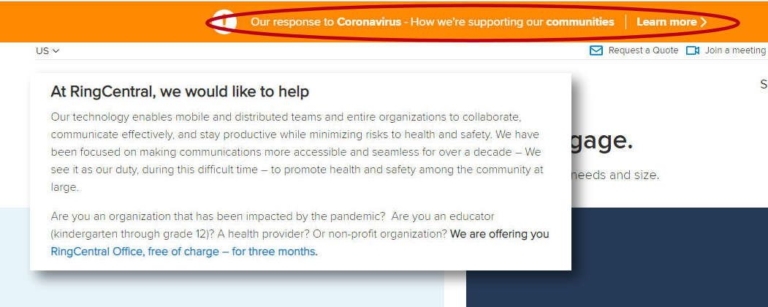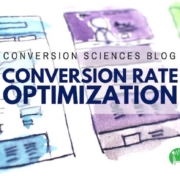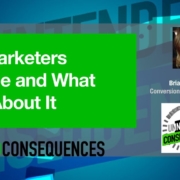6 Smart Ecommerce Strategies to Minimize COVID-19’s Impact on Revenue
Here are 6 very smart ecommerce strategies that will help you minimize the impact of COVID-19 on your business revenues. Take notes.
We like to make business decisions with data. We’ve looked at the data that is available about the coronavirus, COVID-19. Based on our analysis, we believe there is going to be a change in character of the web traffic for many of our ecommerce customers.
These challenging times have already impacted supply chain and will continue to have a serious economic impact on businesses in the future. But there’s always winners, even during recessions.
- The closing of physical stores may drive more online business. We want you to be ready for this.
- The closing of offices, factories, and warehouses may disrupt supply chains. We want you to be ready for this, too.
As always, we want to help you minimize the negative impact of COVID-19 pandemic on your ecommerce store and embrace the positive.
Don’t Go Down Without a Fight: Six COVID-19 Ecommerce Strategies from Smart Businesses
According to behavioral economics, our memories are enhanced during periods of high emotion. The uncertainty created by the coronavirus and its financial impact is putting all of us into an emotional state.
What you do now will be remembered by your customers and prospects more than at any other time in your relationship.
Adding some certainty back into the equation is a great way to position your online shop for a big big recovery.
We work with a variety of businesses all of which are grappling with the same question:
How are we going to survive this (and maybe even thrive)?
We thought we would share some of the ecommerce strategies they’re putting in place to cope and recover.
Pull back. Save money. Cut expenses. Slash programs. Wait and see. Your competitors are pulling back. Make the most of this. These are strategies every business in America is facing, even if you are unaffected by the virus. These are strategies in times of uncertainty.
These are defensive strategies.
There are offensive strategies you can implement as well. Your approach will determine if you take market share during this time or not.
If you are getting slammed by new online shoppers, you need to cut acquisition costs and support your existing customers. If demand for your products has cratered, you need to eek as much value from this traffic that isn’t buying right now. They will buy again. We promise.
Here’s what the smartest ecommerce businesses are doing right now in the face of the coronavirus.
1. Best Ecommerce Strategy to Minimize CoronaVirus Impact on Revenues: Reposition Your Products for New Visitors
More than eight in 10 (85.6%) respondents ages 60 and older said they were likely to avoid shopping centers and malls. That’s not surprising given that COVID-19 has hit older people the hardest, but it may have an unintended consequence on their shopping habits. emarketer
When your customers change, your messaging should change.
Flexispot was quick on their feet. The world shifted and now the world needed to setup their home workspaces. Flexispot shifted with them.
Be careful with this. You don’t want to make tone-def mistakes like many companies. This can come across as profiteering.

Pure Herbal may appear to be profiting from a bad situation. Source Bobby Hewitt
2. Traffic Dropping? Focus on Existing Customers to Minimize Impact of COVID-19 on Revenue
Why spend money on acquiring new customers if they just aren’t buying. Spread some love on your existing customers.
Free products. Free advice.
What could you do during this time to make your existing customer feel loved.
Most businesses are simply telling their customers whether or not things are business as usual. Others are using this to let their customers know that they’re with them.
IKEA’s ecommerce marketers sent an email to their IKEA Family members offering advice on how to setup an office space in their home.

IKEA emailed existing customers offering tips on setting up a home office. Source Dennis van der Heijden
3. Smart Ecommerce Strategies when Conversions are Down: Grow the List
People aren’t spending money like they were a few weeks ago. This doesn’t mean you can’t get value from them.
Use this time to build your list. The most successful ecommerce companies are very good at email.
Conversion Optimization is getting the most value from every visitor to your website.
Here are some options for building your list when visitors aren’t buying.
Offer Content Instead
Offer something of value directly related to your customers. Of course, the virus itself is fair game. How will people who normally buy your products go on without them?
It will be quite easy to create a small report “Six alternatives to ___________ during the COVID-19 outbreak”. Insert your product.
Why would you tell your visitors how to live without your product? If they need your product, but aren’t able to buy right now, you’re doing them a real favor.
You don’t have to go to this extreme. But you must offer relevant content, something that will entice qualified visitors to share their name and email address.
When things begin to recover, the people on your list will be well-qualified future customers. And you will have their name and email address.
Offer Free Products: Think of them as Free Trials
Here’s another smart ecommerce strategy to minimize the pandemic’s impact on your revenues. If you can’t sell it, give it away. At least you’ll be building a list of future buyers and taking market share from your more timid competitors.
One of those sectors that will boom as more employees work from home is online video conferencing. One company sells online video conferencing, virtual meeting rooms and secure instant messaging.
Even though business is booming, they are offering their service for free to non-profits and healthcare professionals. Why? To help the cause and to gain customers who may buy after the crisis recedes.
Popups and Sticky Bars
When you enter an ecommerce site, you are likely to get a popup offering you a discount code in exchange for your email address. If people have stopped buying, however, discounts won’t work.
Replace them with your content or free product offers.
Sticky bars are another way to inform your visitors that you are offering things for which they may want to give you their email address.
The beauty of these solutions is that they can be implemented easily without changing your entire website. Services such as Optimonk, OptinMonster, Hello Bar make it easy to implement these on your site with minimal IT intervention.
We recommend trying these approaches:
- “Welcome mat.” Opens when the visitor arrives.
- “Jilted lover.” Also called an exit-intent overlay, it displays when a visitor is leaving the site.
- “Wheelie popper.” Popup that appears when the visitor scrolls a certain distance down the page.
- “Poptart.” These ads pop up after a certain amount of time passes. Like a toaster pastry.
4. Media Strategy 101: Do you need to advertise products that are going to sell out anyway?
We did an analysis for one client who was getting rushed by new online buyers. We found that most of the purchases were coming through paid search ads. The acquisition cost of this traffic ate up much of their profit compared to organic search, email and other channels.
So, they responded by decreasing their ad spend and letting the other channels buy.
5. Getting Slammed? Focus on profitable traffic.
Several of our clients are getting slammed right now. Some for obvious reasons. Some for reasons we can’t fathom.
This creates a problem, however. In a worst-case scenario, the virus will shut down the factories and warehouses that are needed to replenish depleted inventories.
The solution: maximize profits on the inventory you have.
We don’t consider it ethical to jack prices up in order to decrease demand. The demand is going to be there regardless of the price.
But you may want to reduce spending on high-acquisition-cost channels in favor of lower cost channels.
6. Unexpected Ecommerce Strategy to Minimize COVID-19’s Impact on Revenue: Digital end-caps
End-caps are the displays you see at the end of the aisle in grocery stores. They are used to increase product sales, like putting gum and candy at the checkout stand. You can use this technique in your digital store.
For example, promote in-stock products on the pages of out-of-stock products.
One of our clients sells industrial safety gear online for manufacturing and construction. They stock respirators, gloves, and other products in high demand due to the virus. They also sell products that aren’t getting depleted, such as spill containment kits and work gloves.
The in-demand products are bringing a whole new segment of visitors to their online store. Just because there is a virus doesn’t mean that these new visitors don’t need those other products.
By strategically placing messaging over products that are depleted, the company can position in-stock products for purchase. They are also communicating their offering to a whole new group of visitors that may not have been familiar with their brand.
Who’s going to do all of this?
If you don’t have the resources to implement these marketing strategies, let us help.
For several of our clients, dropping traffic volume means we can’t run as many tests as usual.
We have excess capacity.
Our COVID-19 response package is inexpensive and can be implemented very quickly.
- Review your analytics to determine where you should stop spending and where you should double down.
- Identify the strategies from this list that apply to your business.
- Setup the necessary tools to support the strategy.
- Design several versions of the creative and copy.
- Launch, monitor and measure.
- Adjust based on the data.
We can offer all of this for a lot less than the money you’re losing right now. Why? Because we hope that, when things return to normal, you’ll want some more of our data-driven strategies on your site.
Jump on a call with us today to see if you qualify for this amazing offer.
- 7 Simple & Effective Ways to Improve Your Email Open Rates - February 23, 2021
- The 3 Most Effective Marketing Strategies For Ecommerce Businesses - December 26, 2020
- Google Ads not Converting? Try These 4 Optimization Tricks - August 6, 2020
















Leave a Reply
Want to join the discussion?Feel free to contribute!